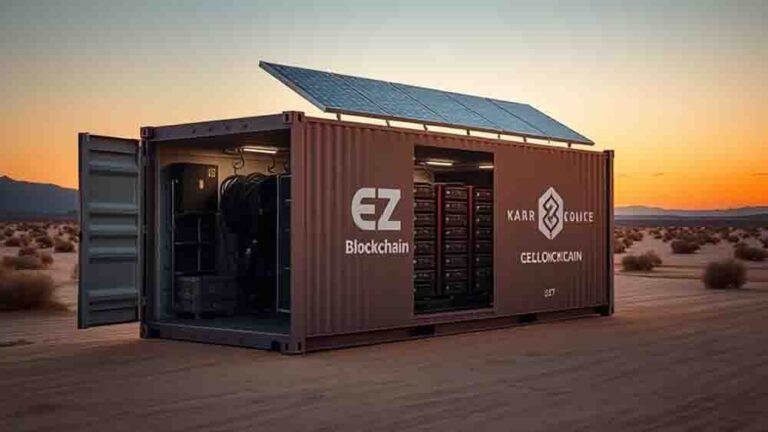What Are the Greenest Mining Technologies Today?
Note: This post may contain affiliate links, and we may earn a commission (with No additional cost for you) if you purchase via our link. See our disclosure for more info. The gold and crypto world is constantly changing. This is not financial, investment, legal, or professional advice. So, please verify the information on the gold and cryptocurrency provider’s websites.
Click below and listen to the podcast on this page.
You've heard about the environmental concerns of cryptocurrency mining. But, there's a growing movement for greener mining technologies. The most eco-friendly mining operations use renewable energy sources, new hardware, and advanced cooling systems. They aim to reduce their carbon footprint. These advancements are good for the planet. They're also cost-effective for miners. As the industry evolves, you'll find that sustainability and profitability are increasingly going hand-in-hand. But what are these green technologies? How are they reshaping mining? The answer might surprise you.
Key Takeaways
- Renewable energy integration reduces carbon footprint and operational costs by up to 30%.
- Energy-efficient hardware, like battery-powered trucks and ASIC designs, optimizes power consumption and reduces emissions.
- Proof-of-Stake consensus mechanisms can decrease energy consumption by up to 99% compared to Proof-of-Work.
- Waste heat recovery solutions capture excess thermal energy, improving efficiency and lowering costs by up to 30%.
- Sustainable data center practices, including energy-efficient cooling systems, can reduce energy use by up to 80%.
Renewable Energy-Powered Mining Operations
Increasingly, mining companies are turning to renewable energy sources to power their operations, revolutionizing the industry's approach to sustainability. This shift towards renewable energy-powered mining is driven by the potential to reduce operational costs by up to 30% while considerably lowering carbon emissions.
By investing in solar panel installations and wind projects, mining companies are enhancing their energy efficiency and adopting more sustainable mining practices.
The integration of renewable energy sources into mining operations offers several benefits:
- Decreased dependency on fossil fuels
- More resilient energy supply
- Improved supply chain efficiency and transparency
- Alignment with global environmental goals
These renewable energy initiatives are transforming the mining sector, contributing to its long-term viability and sustainability.
As you explore the latest advancements in mining technologies, you'll find that the combination of renewable energy and advanced logistics technologies is reshaping the industry's environmental impact.
Efficient Hardware and ASIC Designs
The evolution of efficient hardware and ASIC designs marks a considerable leap forward in sustainable mining practices. These advanced technologies are revolutionizing the industry, offering substantial benefits regarding environmental impact and operational efficiency.
Efficient Hardware:
- Battery-powered trucks and rigs can considerably reduce CO2 emissions compared to diesel alternatives.
- Komatsu's electric mining dump truck exemplifies this shift towards greener technologies.
- Integration of energy-efficient hardware can reduce operational costs by up to 30%.
ASIC Designs:
- Application-specific integrated circuits optimize power consumption and increase processing efficiency.
- Advanced ASIC designs enhance automated mining machines, leading to a 15% increase in excavation efficiency.
- Continuous research and development in ASIC technology drives innovation in mining hardware.
The implementation of these green technologies not only minimizes resource use but also helps mining companies adapt towards more sustainable practices.
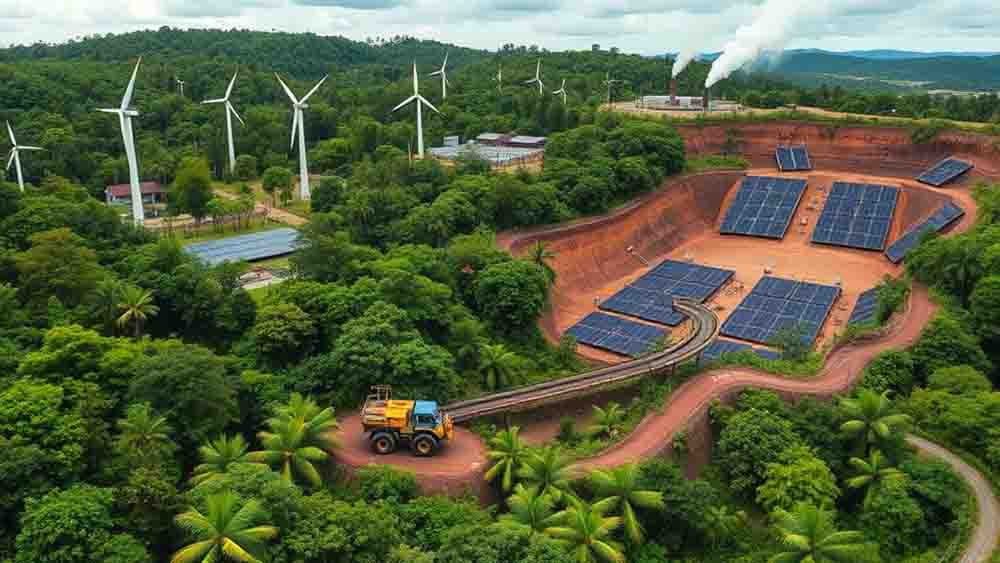
Immersion Cooling Systems
Building on the advancements in efficient hardware and ASIC designs, immersion cooling systems represent another leap forward in sustainable mining technology. These innovative systems use dielectric fluids to submerge and cool mining equipment, considerably improving energy efficiency and reducing the need for traditional air cooling methods.
By implementing immersion cooling systems, you can:
- Reduce operational temperatures by up to 30%
- Extend equipment lifespan
- Minimize maintenance costs associated with overheating
- Lower energy consumption by 15-20%
- Decrease greenhouse gas emissions
Immersion cooling technology offers a versatile and effective solution for managing thermal loads in mining operations. By optimizing heat dissipation, these systems contribute to a smaller carbon footprint, making them a greener alternative in the mining sector.
The adoption of immersion cooling systems is on the rise, not only in mining but also in data centers, showcasing their effectiveness across various industries.
As you consider ways to make your mining operation more sustainable, immersion cooling systems should be at the top of your list. They offer tangible benefits related to energy efficiency, equipment longevity, and environmental impact, making them a smart choice for eco-conscious miners looking to reduce their carbon footprint while improving operational efficiency.
Proof-of-Stake Consensus Mechanisms
Among the most promising advancements in green mining technologies, Proof-of-Stake (PoS) consensus mechanisms stand out for their potential to revolutionize blockchain sustainability. This innovative approach considerably reduces the environmental impacts associated with traditional Proof-of-Work systems, offering a more energy-efficient alternative for validating transactions.
Key benefits of PoS:
- Energy efficiency: PoS can reduce energy consumption by up to 99% compared to traditional mining methods.
- Sustainable operation: Validators create new blocks based on their staked coins, eliminating the need for energy-intensive hardware.
- Enhanced security: Validators are financially incentivized to act honestly, protecting the network's integrity.
The adoption of PoS is gaining momentum, with over 60 blockchain networks implementing this sustainable technology. A prime example is Ethereum's change to PoS in September 2022, which resulted in a staggering 99.95% reduction in its carbon footprint.
This shift demonstrates the potential for mining companies to embrace more environmentally responsible practices.
As the blockchain industry evolves, PoS mechanisms offer a promising solution to address the energy concerns associated with cryptocurrency mining. By leveraging this technology, the sector can move towards a more sustainable future while maintaining the security and efficiency of blockchain networks.
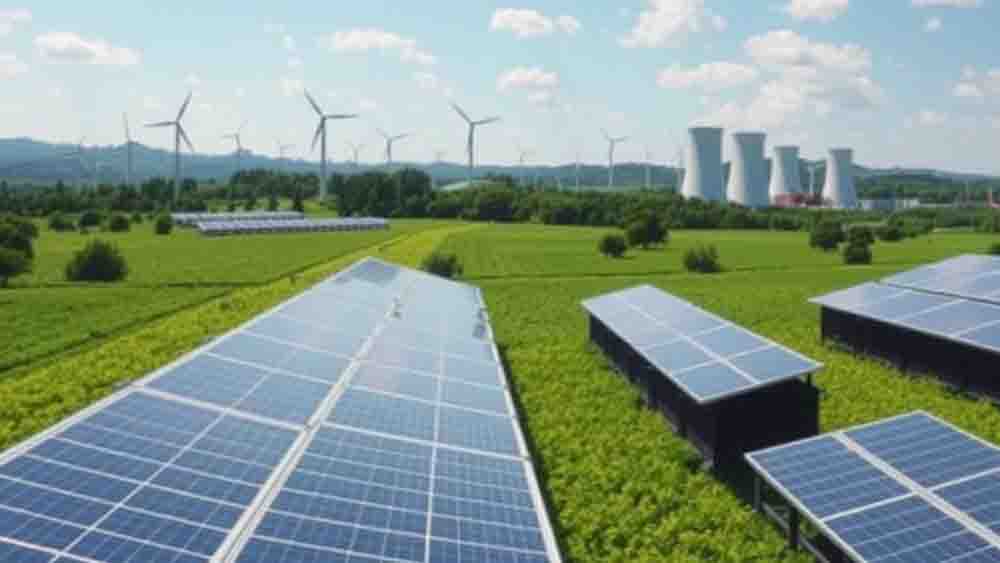
Green Mining Pools
While Proof-of-Stake mechanisms offer a sustainable approach for blockchain networks, traditional mining operations are also innovating to reduce their environmental impact.
Green mining pools have emerged as a collaborative solution for companies to jointly develop and implement green mining technologies. These initiatives focus on minimizing ecological disturbances and improving sustainability practices across the industry.
By participating in green mining pools, companies can:
- Share resources and technologies to reduce environmental impact
- Invest collectively in renewable energy sources
- Implement advanced waste management techniques
- Develop innovative extraction methods like in-situ recovery and bioleaching
- Enhance transparency and accountability in sustainability efforts
Green mining pools enable companies to pool their resources, leading to cost savings and increased efficiency in resource extraction processes.
This collaborative approach allows for the adoption of best practices in sustainability, including the use of renewable energy sources and advanced waste management techniques.
By working together, mining companies can develop and implement innovative methods that minimize land disturbance and improve environmental outcomes.
The transparency and accountability fostered by these pools promote a culture of responsible resource management across the industry, ensuring a more sustainable future for mining operations.
Carbon Offset Programs
Carbon offset programs have become an essential tool for mining companies aiming to reduce their environmental impact. These initiatives allow firms to invest in projects that decrease greenhouse gas emissions elsewhere, effectively balancing out their own carbon footprint.
By participating in voluntary carbon markets, mining companies can purchase carbon credits to offset emissions from their operations, demonstrating a commitment to sustainability and responsible environmental practices.
These programs typically involve investments in:
- Renewable energy projects
- Reforestation initiatives
- Methane capture systems
The global carbon offset market is projected to reach $50 billion by 2025, reflecting the growing importance of sustainability in the mining industry.
By implementing carbon offset programs, companies can:
- Mitigate climate change
- Enhance their reputational value
- Attract investors focused on ESG criteria
Carbon offset programs offer a way for mining companies to create a net-zero impact on the environment while maintaining their operations.
As the industry moves towards greener practices, these initiatives will play a significant role in balancing economic growth with environmental responsibility.
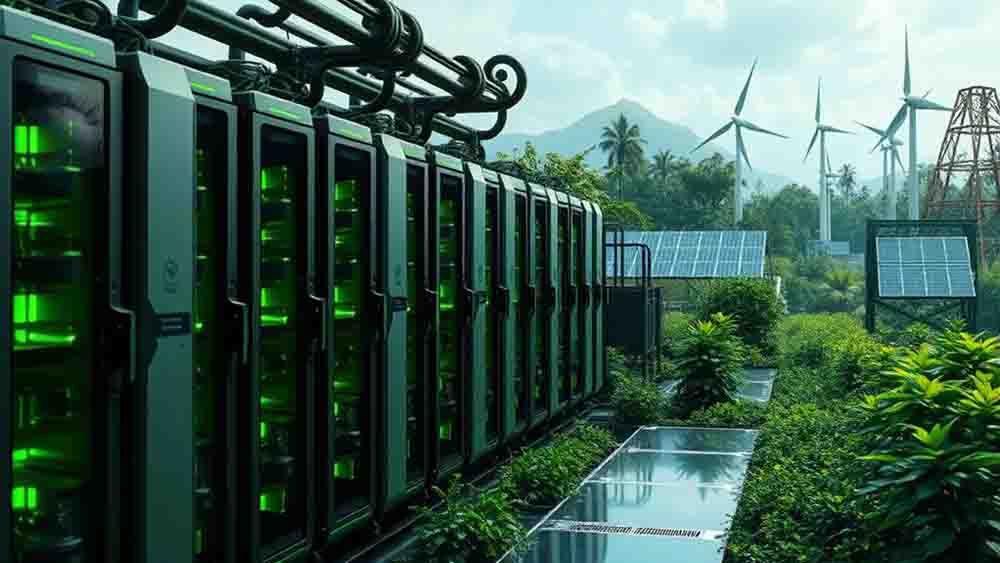
Waste Heat Recovery Solutions
Within the domain of green mining technologies, waste heat recovery solutions stand out as a game-changing approach. These systems capture and repurpose excess thermal energy from mining processes, considerably improving energy efficiency and reducing operational costs by up to 30%.
By implementing waste heat recovery technologies, you're not only lowering energy consumption but also aligning with regulatory frameworks that promote sustainable practices and reduce environmental impact.
Waste heat recovery solutions offer several benefits for mining operations:
- Convert excess heat into electricity, generating renewable energy
- Decrease reliance on fossil fuels
- Utilize low-temperature waste heat with advanced technologies like Organic Rankine Cycle systems
- Achieve conversion efficiencies of 10-15%, contributing to reduced greenhouse gas emissions
- Recycle waste heat for heating processes or facility operations
These systems integrate heat exchangers within mining operations, minimizing energy waste and enhancing sustainability.
Advanced technologies, such as ORC systems, can efficiently utilize low-temperature waste heat, further improving overall energy efficiency.
Sustainable Data Center Practices
You'll find that sustainable data center practices are essential for modern mining operations, with energy-efficient cooling systems playing a key role.
These advanced cooling technologies, including liquid cooling and free air cooling, can greatly reduce operational costs while minimizing environmental impact.
Additionally, integrating renewable power sources like solar and wind into data center operations can further decrease energy consumption and contribute to a greener mining industry.
Energy-Efficient Cooling Systems
Data centers, the workhorses of the digital age, are embracing energy-efficient cooling systems to slash their environmental impact. These innovative technologies are revolutionizing sustainability in the data center industry, offering significant reductions in energy consumption and costs.
By implementing advanced cooling methods, you can achieve remarkable improvements in energy efficiency:
- Liquid cooling and free-air cooling can reduce energy use by up to 80%
- Evaporative cooling techniques can lower PUE ratings to as low as 1.1
- Smart cooling technologies can cut energy consumption by 30%
- Renewable energy integration minimizes reliance on fossil fuels
- Phase change materials improve efficiency and reduce peak energy demand
You'll find that these energy-efficient cooling systems not only benefit the environment but also your bottom line.
By incorporating liquid cooling, evaporative techniques, and smart technologies, you can dramatically reduce your data center's energy consumption.
In addition, integrating renewable energy sources like solar or wind power to operate these cooling systems enhances sustainability even more.
Advanced thermal management solutions, such as phase change materials, offer additional opportunities to improve cooling efficiency and reduce peak energy demand, contributing to overall energy savings in your data center operations.
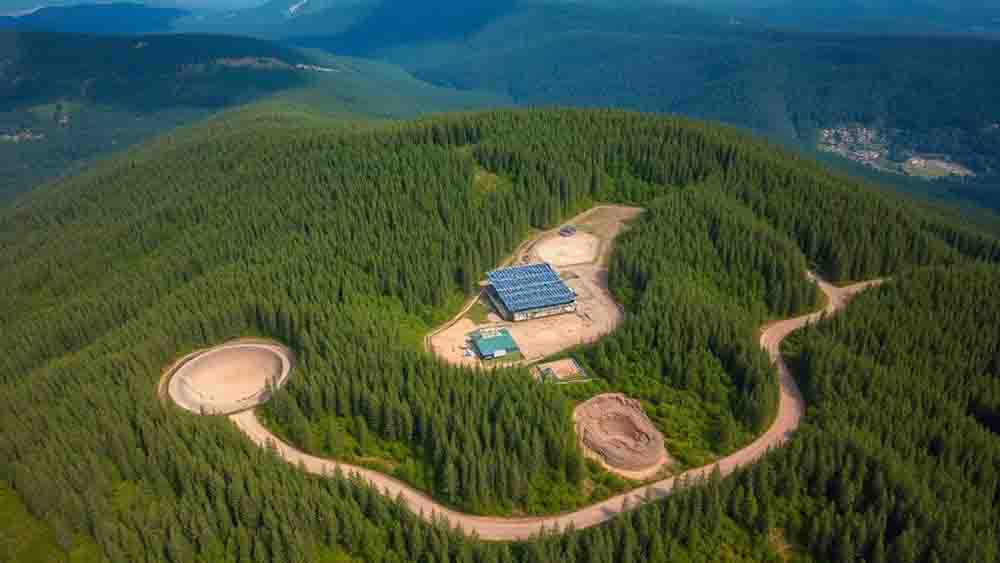
Renewable Power Integration
Renewable power integration is revolutionizing sustainable data center practices in the mining industry. By incorporating solar and wind energy sources, mining operations can greatly reduce their environmental impact while enhancing energy efficiency.
This integration offers several key benefits:
- Cost reduction: Renewable energy can decrease operational costs by up to 30%.
- Reduced carbon footprint: Green energy sources considerably lower greenhouse gas emissions.
- Optimized energy usage: Advanced management systems guarantee efficient utilization of renewable power.
Mining companies are leveraging these sustainable practices to create greener data centers. By powering their operations with renewable energy, these facilities consume less electricity and minimize their carbon footprint.
Additionally, the implementation of battery storage solutions allows excess energy to be stored for use during peak demand periods, further promoting sustainability.
The adoption of renewable power integration in mining data centers demonstrates a commitment to environmental stewardship. As the industry continues to evolve, these green technologies will play a vital role in reducing the sector's overall environmental impact.
Energy-Efficient Blockchain Protocols
As the mining industry seeks to reduce its environmental impact, energy-efficient blockchain protocols have emerged as a game-changing solution. These protocols considerably decrease the carbon footprint of mining operations by utilizing mechanisms that require far less computational power than traditional proof-of-work systems. For instance, Proof of Stake (PoS) can lower energy consumption by over 99% compared to Bitcoin's energy-intensive approach.
The shift to energy-efficient blockchain platforms offers numerous benefits:
- Minimizes energy usage
- Enhances transaction speeds
- Improves scalability
- Promotes long-term sustainability
- Aligns with global environmental goals
These green blockchain solutions often integrate renewable energy sources, such as solar or wind power, allowing mining operations to offset their energy consumption and further reduce their environmental impact.
By adopting energy-efficient blockchain technologies, the mining industry can demonstrate its commitment to responsible resource management and transparency.
The increasing adoption of these protocols not only benefits the environment but also enhances the overall efficiency of mining operations. As the industry continues to evolve, energy-efficient blockchain protocols will play a vital role in shaping a more sustainable and responsible future for mining.
Eco-Friendly Mining Location Selection
The selection of eco-friendly mining locations marks a crucial step in reducing the industry's environmental footprint. Modern mining companies prioritize sites with minimal ecological disturbance, ensuring habitats and biodiversity remain largely intact during extraction activities.
Advanced assessment techniques, including drone surveying and AI modeling, help identify areas with lower environmental impact potential before operations begin.
Sustainable practices involve:
- Selecting previously disturbed sites, such as tailings or abandoned mines
- Utilizing in-situ leaching methods to minimize surface excavation
- Conducting thorough environmental impact assessments (EIAs)
These approaches greatly reduce the need for new land clearing and habitat destruction. Regulations often require EIAs before project approval, ensuring only locations with acceptable ecological footprints are chosen.
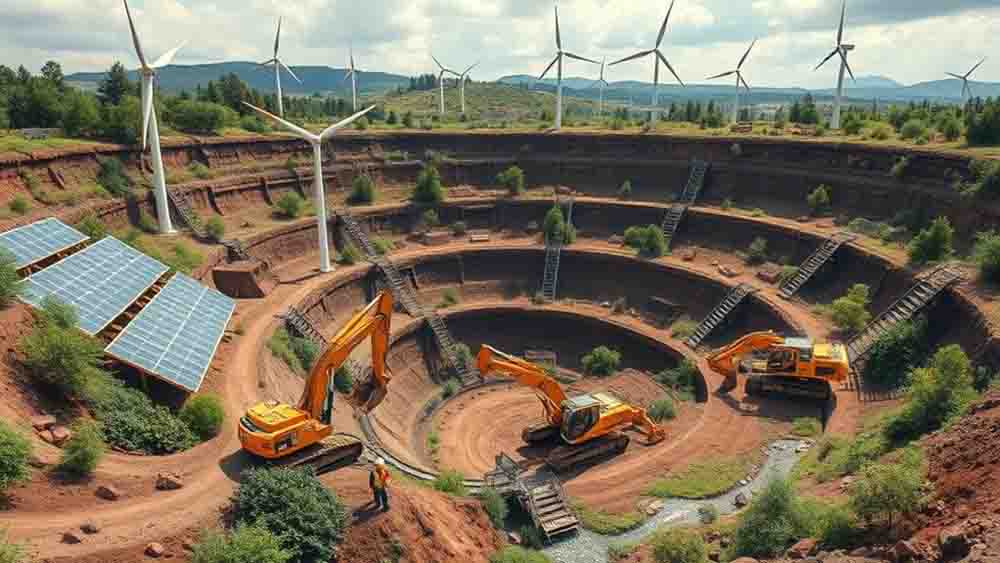
Frequently Asked Questions
What Is the Most Environmentally Friendly Type of Mining?
You'll find that in-situ recovery (ISR) is currently considered the most environmentally friendly type of mining.
It extracts minerals directly from ore without traditional surface excavation, considerably reducing habitat destruction and land disturbance. ISR minimizes waste production and water usage while lowering energy consumption.
This method allows you to access resources with less impact on the surrounding ecosystem, making it a preferred choice for environmentally conscious mining operations.
However, it's essential to recognize that ISR's applicability depends on the specific mineral and geological conditions.
What Is Green Mining Technology?
Green mining technology aims to reduce the environmental impact of mineral extraction.
You'll find it encompasses various innovative approaches, including:
- In-situ recovery and bioleaching, which minimize land disturbance
- Integration of renewable energy sources to lower emissions
- Advanced water management practices for sustainable use
- Use of battery-powered equipment to reduce CO2 emissions
- Implementation of AI and cloud computing for improved efficiency
These technologies work together to make mining operations more sustainable, reducing their ecological footprint while maintaining productivity.
They're transforming the industry, balancing resource extraction with environmental protection.
What Are Some Eco-Friendly Mining Equipment?
You'll find several eco-friendly mining equipment options available today.
Battery-powered machinery, like Komatsu's electric mining dump trucks, offers equal power to diesel alternatives while reducing CO2 emissions.
Automated mining trucks and drilling systems enhance efficiency by minimizing fuel consumption and maintenance costs.
Electric vehicles used in mining operations contribute to lower carbon emissions and improved energy efficiency.
Additionally, advanced waste management systems, such as liquid membrane emulsion technology, extract valuable metals from toxic wastewater, showcasing innovation in sustainable mining practices.
What Is the Least Harmful Mining?
The least harmful mining method is in-situ recovery.
You'll find it's a technique that extracts minerals directly from the ore body without extensive surface disruption. It greatly reduces habitat destruction and soil erosion compared to traditional mining.
You'll also see less impact on local ecosystems and communities. This method minimizes the need for large-scale excavation, heavy machinery, and harmful chemicals.
It's particularly effective for certain minerals, like uranium and copper, making it a more environmentally friendly option in the mining industry.
Conclusion
You've learned about the greenest mining technologies available today. Innovations are transforming the industry. They include: renewable energy integration, efficient hardware, and sustainable practices. By adopting these technologies, you're not only reducing operational costs but also minimizing environmental impact. Remember, the future of mining lies in balancing profitability with sustainability. As you weigh your options, prefer eco-friendly solutions. They should align with global environmental goals. Embrace these green technologies to contribute to a more sustainable mining future.











